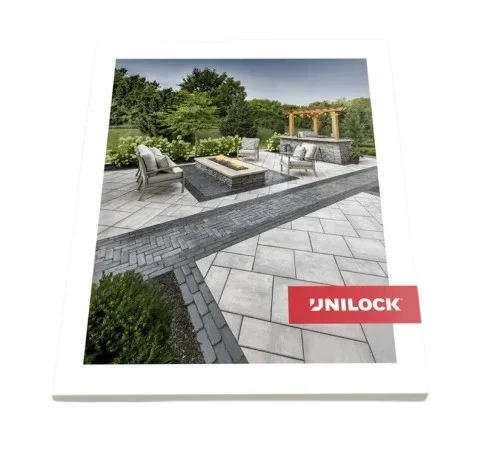The Advantages of Installing Permeable Pavers

Permeable pavers look similar in size, shape, color, and finish to traditional pavers. The difference? They are designed with special spacer bars that increase the joint size between pavers. This allows rainwater to more easily flow directly through to the earth and away from storm drains and sewer systems, and in turn earns these pavers their reputation as a leading eco-friendly choice for pedestrian and vehicular applications, for both residential and commercial projects.
Longstanding Durability
Permeable pavers are just as durable, reliable, and attractive as concrete pavers. They, too, can support heavy loads and be relied upon not to crack under such pressure. Landscape contractors have relied on permeable pavers for erosion control in pond lining.
The Sustainable Choice
Homeowners and commercial property managers are increasingly interested in sustainable choices, and permeable pavers give landscape contractors a way to guide them to a “greener” alternative. Impervious surfaces are known for pushing rainwater, oil, and pollutants toward storm sewers, which can affect rivers and lakes.Local storm systems are designed to collect rainwater runoff, domestic sewage, and industrial waste, altogether in a common pipe. Traditional impermeable surfaces have overextended these storm management systems, particularly in urban areas. Permeable pavers are a forward-looking solution.
With larger gaps between each permeable pavers, water drains into the aggregate base, which naturally filters pollutants from the rainwater. Rather than directing water directly toward storm drains, where it will immediately come into contact with street runoff, the ground water is preserved on location. This resource can then be repurposed for other uses, such as irrigation, outdoor water features, and so on. Joint sizes vary for Unilock permeable interlocking concrete pavers, which allow a minimum of 100 inches per hour of surface infiltration.
As an added benefit, local municipalities may offer homeowners incentives for using these more porous materials. Some municipalities charge a stormwater tax, calculated on the amount of impervious surface area covering a property.
Versatile Product Looks & Textures
There are a range of permeable paver options that rival or match the beauty of traditional pavers (Town Hall pavers, for example, can be deployed for traditional or permeable applications). There’s no reason to compromise function for a creative choice as there’s a color palette for most every project.
For example, if you are building a patio or pool walkway, you may want to achieve a textured flagstone surface, such as Thornbury pavers. These offer non-slip utility with a rustic charm. If you need pavers suitable for vehicular applications, Unilock Eco-Stone is a beautiful option that allows for natural drainage and water migration to the earth.
Temperate Across Seasons
Permeable pavers offer year-round convenience. The lack of water pooling on the surfaces minimizes the need for deicing treatments.. In the summer, the use of permeable paver reduces the buildup of heat that impervious surfaces are known for creating (in other words they reduce the “heat island effect”).
Standard Construction Process
Construction methods for permeable pavers are very similar to traditional pavers. The top layer is ⅛ inch to ½ inch bedding course of clear chip stone. The main drainage layer consists of ¾ inch clear chip stone, known as ASTM No. 57. The subsequent aggregates beneath allow for further filtration. In turn, a rainwater retention area is created below the paver surface. This helps store water that is not immediately absorbed into the subsoil beneath. The installation of an underdrain may be considered, but is not necessary in permeability rates over ½ inch per hour.
In the case of a permeable paver, the spacer bars are then used in the base and joints to promote and allow for waterflow. As a sustainable product that is protecting the local ecosystem, permeable pavers are worthy of consideration for a variety of situations.







